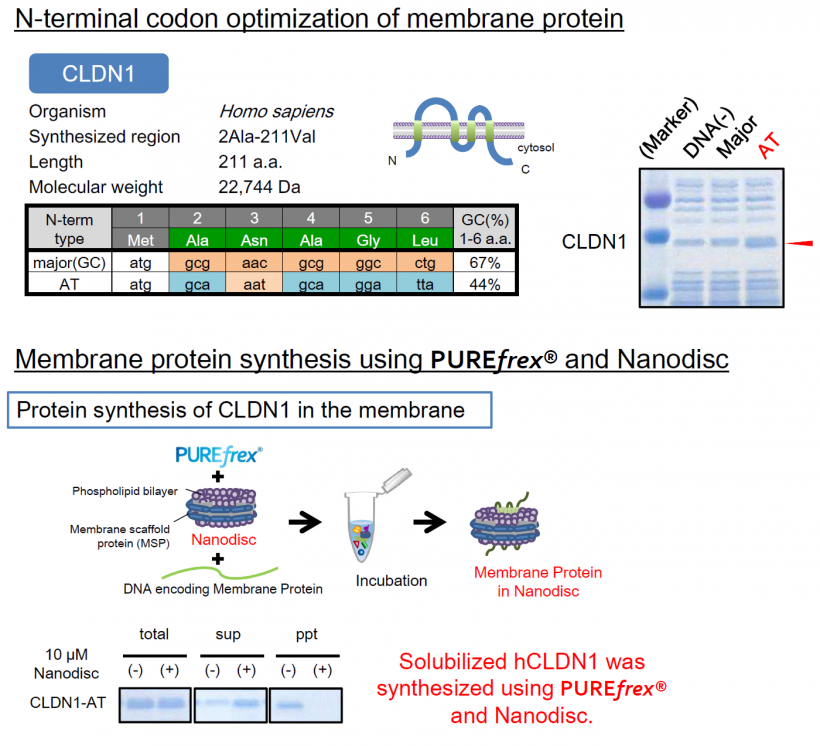【Poster_MBSJ 2016】Improvement of translational efficiency by N-terminal codon optimization in the reconstituted cell-free protein synthesis system
Download PDF (1 MB)
DownloadsKeywords
PUREfrex 2.0 / DsbC Set / DnaK Mix / N-terminal codon optimization / membrane protein synthesis / nanodisc / Fab antibody / PD-1 / PD-L1 / GM-CSF / citrate synthase (Yeast Cit1p)/ prostaglandin-H2 D-isomerase (PTGDS) / CLDN1
Abstract
When the recombinant proteins are expressed in E.coli, it is common that the most frequently used codon among synonymous codons is used for each amino acid on the template DNA. On the other hand, there are some reports that endogenous proteins with high expression level in E.coli preferably use AT rich codons at N-terminus of ORF (from start codon to several amino acids). However, those findings are based on the data from in vivo experiments, so the final expression level of the protein may be influenced by digestion or metabolism other than translation itself. Thus, we evaluated the effect of N-terminus codons on translation efficiency with a build up cell-free protein synthesis system (PURE system) that consists of the factors involved in transcription and translation in E. coli avoiding the influence other than translation reaction.
First, we prepared template DNAs of heavy chain from Fab fragment using 56 different kinds of synonymous codons for the 2~6 amino acid region just after the start Met, and then synthesized heavy chain of Fab with PURE system (PUREfrex® 2.0). The amounts of synthesized heavy chain were greatly different depending on the template (maximum two-digit difference), and it was correlating to the AT rich ratio of N-terminus of ORF. Interestingly, the template DNA with major codons showed less than 20% translation efficiency than that with AT rich codons showing the highest translation efficiency. Furthermore, several proteins including PD-L1, which showed low expression level, were applied to the same approach, and it was shown that the template DNAs with AT rich codons led to better translation efficiency in all cases. Furthermore, we also succeeded in synthesizing human membrane protein (CLDN1) with optimized N-terminal codons using PUREfrex® supplemented with nanodisc, and purifying it as a soluble protein.
These data suggested that AT rich codons on the template DNA accelerated the translation reaction itself. So, even in the case with cell-free translation system, it is expected that the conversion of the template DNA with AT rich codons at the N-terminus of ORF facilitates productivity of the proteins with lower expression level.

